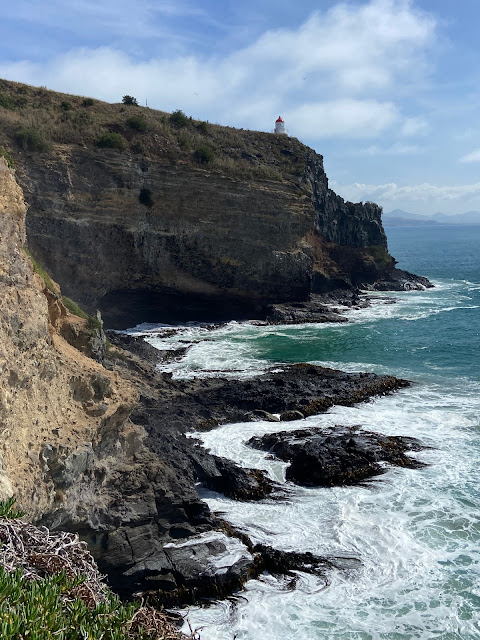Posting a bit on the fly today, and place we are staying has no WiFi or cell service. It’s way up in the hills in a small valley, amazing bird sounds, twin outside bathtubs and the cabin is made of logs. This undersells it, there is a lovely fireplace, resident sheep who come running when we approach, and is incredibly peaceful. And nearby geocaches for those that partake.
But that is not what I am posting about. On the Otago peninsula south east of Dunedin is the only albatross nesting ground on mainland. There is some interesting history here: the area was a strategic point for the Māoris as the point rises up to a cliff and has great visibility. But was forested until there was a scare due to warships coming into the Wellington harbor (Russian) with more artillery than the entire country of New Zealand. This prompted a fear of Russian invasion of Australia using New Zealand as a launching point. Why is this important? The military cleared the trees off the point. Which might make you cringe ecologically but in this case it provided a habitat for albatross as they need open spaces and windy areas to settle and nest. Even so they had issues with successfully hatching and fledging their young until a man passionate about protecting them in the 1930’s literally camped nearby to protect a nest until it hatched. One can only wonder what the military folks thought of that. But it worked.
A few facts albatross. There are several species and the ones here are the northern royal albatross (the southern nest on Antarctica). These birds mate for life in a ‘marriage’ but only get together every 2 years (and they can get divorced although it’s rare). And here is the big one: they spend 85% of their lives AT SEA. Either flying or floating. They only come ashore for mating and nesting and raising their babies. They are among the largest of the flying birds, their wingspan is over 3 meters. Big birds. They drink salt water and have these nostrils to expel the salt.
We were able to see the colony from the former base which is now an observation center and then on a nature boat ride where we cruised around and got to see them flying about.
The former military base here was present from the Crimean war to WW2. There was this enormous Anderson’s Disappearing gun which was installed. Think cannon that drops down and can rise up. The concussive sound was sure to be literally deafening. It is still in place and part of the tour (and secret way to see even more nesting birds.
Today the birds have 2 alternating colonies that nest here as they only nest every 2 years. Amazing. Oh and we saw our first blue penguin!





Comments
Post a Comment